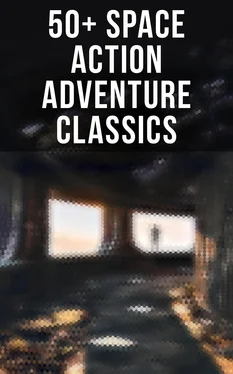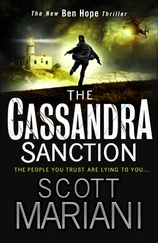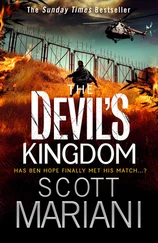But now the French troops began to manifest a livelier intelligence. They were amidst familiar things, nearer their homes and less cut off from subversive influences than the British. A certain General Nivelle, at that time French Commander-in-Chief, made what Churchill calls an “experiment”, which resulted altogether in the loss of nearly a couple of hundred thousand men. It involved the advance of masses of infantry into intense fields of fire. In an hour, said Lieutenant Ybarnegaray (in a debate in the French Chamber, June 1917), they were reduced to a crowd “running like madmen”, all formations and distinctions lost. Provision had been made for less than 15,000 wounded. There were seven times as many. Most of the casualties never received the most elementary attention for three days. The result was gangrene, amputation and death for thousands. Then came the first intimation that there were limits to human obedience. A French division ordered into action to continue this futile holocaust refused to march. Churchill says this was “deeply disquieting” to the authorities, and no doubt it pained and distressed every intelligent amateur of war. This particular division was cajoled into a change of mind. It took part in the fighting, says Churchill, “without discredit”, but the spirit of its resistance spread.
The next sign of sanity in this world torture was the collapse of the grotesque Russian autocracy. We have already told of the mental and moral decay of the Tzardom in our general study of the degeneration of monarchy. [Non inventus. — ED.] Abruptly this profoundly rotten government collapsed into nothing; its vast domains became a various disorder, and for some months phantom imitations of Western revolutionaries, inspired by memories of the first French revolution or by legends of British parliamentary wisdom, occupied the capital. The one certain fact in the situation was the accumulated disinclination of the Russian people for any further warfare. But this first republican government under an eloquent lawyer politician, of no great directive force, Alexandre Kerensky, was unable either to carry on the war or to end it. A subdued but spreading clamour for “peace by negotiation” in all the combatant countries ensued, a clamour that active repression and the most rigorous concealment in the Press failed to silence. There was an attempt to call a sort of peace conference of Radicals at Stockholm, and then a second revolution in Russia which carried a small and resolute Communist organization to power — carried it to power simply and solely because there was no other organized alternative, and because it promised peace plainly and surely — peace on any terms. The Russian armies melted away at its signal; the men streamed home. The German military authorities in the East found the trenches before them undefended, and with every courtesy of war, as one soldier to another, welcomed the Russian officers of the old régime, taking refuge from the belated resentment of their own men.
In 1917 mankind seemed already to be awakening from the war-nightmare. Mutinies broke out in sixteen separate French army corps, 115 regiments were involved, divisions elected soldiers’ councils and whole regiments set out for Paris to demand a reasonable wind-up of the struggle. The one last hope of the despairing soldiers, said Pierre Laval, had been Stockholm. That disappointment had made life unbearable. But the storm abated with the entry of the United States of America into the war, and the powers in control of the Western World were still able to pursue their dreadful obsessions for another year.
War Pictures for Posterity by Pen, Pencil and Camera devotes a whole volume (xxi) to the tragedy of a special Russian infantry corps in France. Fifteen thousand Russians had been sent thither in 1916 to be equipped and armed and put into the line with the French armies. Many of these poor lads scarcely knew the difference between a Frenchman and a German, and the ostensible objects of the war were quite beyond their understanding. But they heard of the revolution in their own country and they resolved to consider their attitude with regard to it. They elected representatives and put it to the vote whether they should continue to fight, which meant for them to take part in that “experiment” of Nivelle’s known to be in preparation at the time. They chose what seemed to them the generous part and went into the battle. The French command used them ruthlessly, and nearly 6,000 were killed or wounded. The rest came out of the line and mutinied. They would fight no more. Thereupon these defenceless men were surrounded by trustworthy French troops, a great concentration of guns was assembled, fire was opened upon them suddenly and they were massacred. Horrible photographs of the details of this — photographs hidden away at the time from the authorities and brought to light later — are given in the summary already cited.
For nearly a year the French lost confidence in the morale of their own men and dared make no more great attacks, but their allies offered up another 400,000 men in the battle of Paschendaele and accounted for 300,000 Germans, and in the spring the Germans made a vast multitudinous attack in the West which succeeded at first and then collapsed, whereupon their antagonists, reinforced by new armies from America, waded back through blood to a dreadful final victory. The last nine months of the conflict saw more slaughter than any preceding year. From March 21st, 1918, to November 11th in the same year the British suffered 830,000 casualties, the French and Belgians 964,000 and the Germans 1,470,000. There were also 2,000,000 American troops brought to Europe before the end, and of these more than half were actually engaged in the fighting. Their casualties were certainly not less than 350,000. Portuguese and other contingents from the most unexpected quarters also contributed to that culminating death-roll, but it is impossible for us now to give exact numbers for these minor forces.
These are the gross figures of warfare. But War Pictures devotes three volumes, perhaps the most horrible of all, to the presentation of various details of the fighting in which these vast multitudes suffered and perished. These three volumes are like the microscopic slides in a specimen book of anatomy, which show us from a selected scrap of tissue the texture of the whole. Little figures stand out enlarged, chosen by the hazard that they wrote or talked or carried a camera, to represent the nameless millions who have left no record. We have accounts of men who were left to lie out for days between the lines, tortured by thirst and stifled by the stench of their own corruption, and yet who survived to tell the tale. We have the stories of men who fell into heaps of rotting dead, and lay there choking, and of men who were gassed. The tortures of gas were already many and various, and most of the mixtures then used left tormenting weaknesses in the system for the rest of life. We have descriptions of the rude surgery of the time and abstracts of the mental disorders through which minds fled from reality. There are also some dreadful pictures of mutilated men, faceless, crippled, grotesquely distorted, and an autobiography of one of the blinded (Outstaying My Welcome, by Fritz Schiff, 1923). Scores of thousands of unhappy fragments of humanity had to be hidden away in special institutions until they died, they were at once so terrifying and so pitiful and hopeless. The world forgot them even while they lived.
The distortion of souls was even more dreadful than the distortion of bodies. One of the most lurid items in that dreadful assemblage of realities is a lecture on the use of the bayonet, which chanced to be printed, reprinted later by anti-war propagandists and so preserved for us, delivered by a certain Sergeant-Major Franklin to some English cadets in London. To us he is incredible in his ferocity; we are almost forced to believe he was drunk or mad, until we realize from the “laughter” that punctuated his utterances, from the hearty thanks of his commanding officer, and the “three cheers” which rewarded him at the conclusion of his discourse, that he was merely expressing the spirit of war service as it was then understood.
Читать дальше











